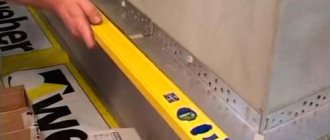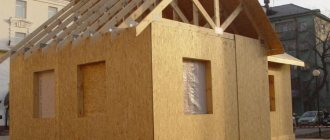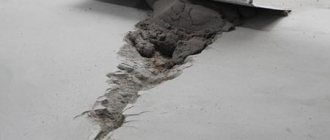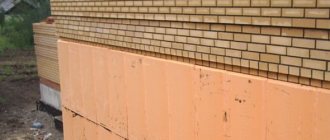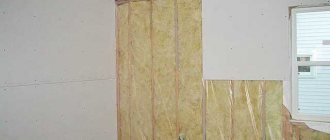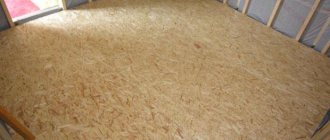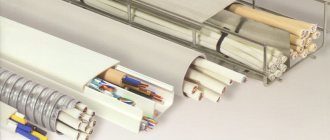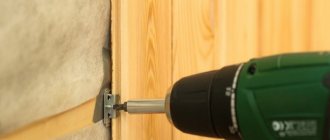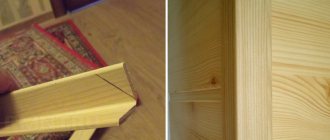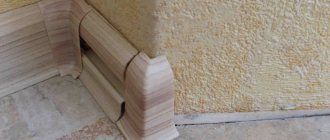To ensure a good microclimate in the house, you need to know how to attach mineral wool to the wall. This is one of the most popular and sought-after thermal insulation materials. It is widely used to protect houses and buildings made from various materials from the cold.
At the same time, the question naturally arises about attaching mineral wool to the wall. There are several options. But each of them has its own nuances, rules, and implementation features.
In general, a material such as mineral wool is a universal insulation material. It has excellent characteristics such as thermal conductivity, hygroscopicity, density and so on.
In fact, properly carried out thermal insulation is 90% of success. By selecting the wrong density value, as well as by violating the installation technology, the efficiency of mineral wool can decrease significantly. And sometimes it won't work at all.
Thermal insulation materials
To understand how to properly attach insulation to a wall, you need to find out the features of each sample. All types of heat insulators are used to reduce heat loss in a room. This group includes infrared reflectors and building materials with low thermal conductivity. The latter are in great demand and can be organic or synthetic in nature.
Reflex type
The principle of operation of the reflector is to slow down the movement of thermal energy. That is, there is no absorption and transmission of IR, as is the case with other materials. The reflection efficiency can reach 97-99%. Such indicators are typical for gold, silver and polished pure aluminum. The latter is actively used in the production of reflective thermal insulation of roll or sheet type with foil coating (1 or 2 layers).
Foil thermal insulation Source stpulscen.ru
Organic material
Here, raw materials of natural origin are used to produce insulation. As a rule, this is waste from the woodworking and agricultural industries. Polymer components and cement are also used as a basis or addition.
Insulation is used in heating conditions up to 150 degrees Celsius. It is relevant for interlayer installation under decorative finishing. Below is a brief overview of samples from the organic thermal insulation group.
Arbolit
The composition includes fine sawdust, planed straw and reeds, and functional additives. The latter include calcium chloride, glass, and alumina sulfate. Cement is used as a binder. At the final stage, the blanks are treated with a mineralizer.
| Characteristic | Meaning |
| Coefficient of thermal conductivity | 0.08-0.12 W/m*K |
| Density | 500-700 kg/cub.m |
| Compressive strength | 0.5-3.5 MPa |
| Flexural strength | 0.4-1 MPa |
Arbolite insulation Source tildacdn.com
PPVC
Polyvinyl chloride foam is made from porous resins that have a foamy structure. In terms of rigidity, the material can be soft or hard, so it belongs to the group of universal heat insulators. The average density is only 0.1 kg/cub.m.
Chipboard
A rigid board made of wood chips contains up to 10% binders and functional ingredients. These can be synthetic resins, fire retardants, water repellents, and antiseptics.
| Characteristic | Meaning |
| Density | 500-1000 kg/cub.m |
| Tensile strength | 0.2-0.5 MPa |
| Flexural strength | 10-25 MPa |
| Water absorption | 5-30% per day |
Chipboard insulation Source yandex.net
DVIP
The material is similar to chipboard, only waste from woodworking or pulp production, straw and corn trimmings are used as a base. The binding component is synthetic resins. Functional additives: flame retardants, water repellents and antifungal substances.
| Characteristic | Meaning |
| Coefficient of thermal conductivity | 0.07 W/m*K |
| Density | Up to 250 kg/cub.m |
| Flexural strength | Up to 12 MPa |
DVIP slabs Source yandex.net
Fibrolite
The material is made from so-called wood wool - these are thin and narrow shavings. The binder component can be cement or magnesium ingredient. Board insulation is inert to chemical and biological activity, has good acoustic properties and resistance to moisture and fire.
| Characteristic | Meaning |
| Coefficient of thermal conductivity | 0.08-.01 W/m*K |
| Density | 300-500 kg/cub.m |
Fiberboard insulation Source twimg.com
PPU
Polyester, emulsifiers and diisocyanate are used to make polyurethane foam. The result is a material with good acoustic properties, inertness to most chemical reagents, and resistance to moisture at a density of 50 kg/cu m. Thermal insulation is applied by spraying, which allows the formation of a seamless monolithic coating in a relatively thin layer. In this case, the configuration of the base does not matter.
| Characteristic | Meaning |
| Coefficient of thermal conductivity | 0.019-0.028 W/m*K |
| Density | 40-80 kg/cub.m |
PPU insulation Source ivteplosten.ru
Mipora
Rigid plastic is made from a water emulsion of urea-formaldehyde resin. To enhance the strength properties, glycerin is added to the composition. The foaming process occurs thanks to sulfonic acid (a petroleum product), hardening - with the help of organic acid.
Mipora goes on sale in the form of crumbly granules or blocks, or a liquid mass. Unlike similar penoizol, the material strongly absorbs moisture and is not resistant to aggressive chemicals. The technical specifications look like this:
| Characteristic | Meaning |
| Coefficient of thermal conductivity | 0.03 W/m*K |
| Density | Up to 20 kg/cub.m |
| Ignition temperature | Over +500 degrees Celsius |
Mipora Source lestnitsygid.ru
See also: Catalog of companies that specialize in home insulation
Expanded polystyrene
The raw material for production is polystyrene, an oil refining product. In its finished form, the material consists of 98% air, since the manufacturing process uses foaming technology. Additionally, fire retardants are added to reduce flammability.
The material is resistant to corrosion and is inert to most chemicals. However, destruction occurs under the influence of ultraviolet rays. Technical properties are presented in the table.
| Characteristic | Meaning |
| Coefficient of thermal conductivity | 0.036-0.050 W/m*K |
| Density | 15-35 kg/cub.m |
| Water absorption | 2% per day |
| Flammability class | G3, G4 |
Extruded polystyrene foam is made from almost the same raw materials, but the technology is different. Thanks to the extrusion method, the result is denser and stronger, lasting approximately 20 years longer. The characteristics look like this:
| Characteristic | Meaning |
| Coefficient of thermal conductivity | 0.028-0.032 W/m*K |
| Density | 28-45 kg/cub.m |
| Water absorption | 0.1% per day |
| Flammability class | G3, G4 |
Expanded polystyrene slabs Source avenue.kiev.ua
Foamed polyethylene
A hydrocarbon substance is used to foam polyethylene. Like expanded polystyrene, the finished insulation consists of approximately 90% air, is inert to chemical and biological activity, and has low water absorption. Thanks to its porous structure, the material has good acoustic properties. The technical indicators are as follows:
| Characteristic | Meaning |
| Coefficient of thermal conductivity | 0.044-0.051 W/m*K |
| Density | 25-50 kg/cub.m |
| Operating temperature range | -40 – +100 degrees Celsius |
Polyethylene foam mats Source prom.st
Cost in Russia
The table shows average prices for insulation in different regions of the country. Dimensions vary from 600x800 to 600x1000 mm, thickness 20-150 mm.
| Region | Stone wool (slab 4 m per pack) | Glass wool (mat 8-10 m) | Ecowool (packaging) |
| Moscow | 580-820 | 1800-2300 | 580 |
| Saint Petersburg | 250-800 | 1400-2800 | 530 |
| Ekaterinburg | 400-700 | 1000-2500 | 600 |
Video description
Video of how penofol is attached to the walls:
Sotoplast
The insulation is based on fiber filler. This may be a carbon, cellulose, organic or glass component. They are used to make woven fabric with thermoactive resins as a binder (epoxy, phenolic). The outside of the material is covered with film.
The structure of the thermal insulation is cellular (the shape is close to hexagonal). It is sold in the form of sheets of laminated plastic. The characteristics depend on the raw materials used, the amount of binder resin, and the size of the cells.
Ecowool
Paper production waste is used to produce insulation. These are waste paper, scraps and discarded corrugated cardboard, books, magazines, newspapers. The quality of the resulting material depends on the raw materials used. For example, recycled materials produce heterogeneous, low-grade thermal insulation. It goes on sale in crumbly form. Over time, the protective coating shrinks.
| Characteristic | Meaning |
| Coefficient of thermal conductivity | 0.035-0.041 W/m*K |
| Water absorption | 9-15% per day |
| Sound absorption | Up to 9 dB with a 1.5 cm layer |
Ecowool insulation Source tproekt.com
Ceiling insulation with stone wool
Advantages and disadvantages of insulating ceilings with stone wool, options for placing an insulator on the ceiling, rules for choosing a material, technology for performing work.
- Features of thermal insulation
- Advantages and disadvantages
- Insulation technology
- Preparatory work
- Selection of stone wool
- Installation from inside
- Installation outside
Ceiling insulation with stone wool is an inexpensive way to prevent heat loss through the ceiling, whether installed inside or outside the room. The quality of work depends on competently performed operations, so in this article we will consider the rules for placing and attaching the insulator to the surface in various situations. Using our recommendations, you can avoid unnecessary financial costs and common mistakes when insulating.
Installation of various groups of insulation
The difference between how to attach insulation to a wooden wall outside or inside is the presence or absence of sheathing. Indoors it is mandatory; thermal insulation is usually fixed to the facade using glue and special dowels. Let's look at methods of attaching thermal insulation using examples of the most popular materials.
Mineral wool
Fiber boards and webs in rolls are characterized by different thicknesses, densities, softness and shrinkage. These points are important, since you need to attach mineral wool to the wall in two ways at the same time, if we are not talking about partitions made of plasterboard or plywood.
The basic technology is installation using lathing. For the supporting frame, you can use a wooden beam or a rack profile for drywall. The pitch between horizontal or vertical slats is calculated based on the width of the insulation used. It should be 3-5 cm smaller. This way the canvas will fit tightly to the supporting structure, which eliminates the formation of cold bridges. Additional crossbars are installed under the slabs. The distance between them is determined by analogy with the basics.
Partitions with mineral wool insulation Source wp.com
Since fibrous materials shrink over time, you need to understand how to attach mineral wool to a wooden wall so that cold bridges do not appear. There are two solutions here. The use of special plastic dowels with a wide head is considered universal. People call them fungi. Rigid stone wool slabs can be glued to a compound that has high adhesion to minerals and the base.
The process step by step: how to insulate?
Wall insulation technology differs for different types of mineral wool.
For a house built in a mild climate, thin wool no more than 50 mm thick is suitable. But if the house is built in the northern regions, then you will need 75-150 mm wool and maybe even 2 layers.
Frame wall insulation for any type, except ecowool, looks something like this:
- The walls of the house are prepared, the old paint layer is removed, and the cracks are sealed.
- Apply an antiseptic to the surface of all wooden parts, including the sheathing, and wait to dry.
- Wooden slats with a thickness of no more than 1 cm are attached to the wall; this provides the air flow necessary for ventilation.
- An overlapping layer of vapor barrier is nailed onto the rail with a stapler.
- Next, timber is nailed vertically along the entire length of the walls with a run of no more than 60 cm. Alternatively, you can create a frame using aluminum slats.
- Lay slabs or rolls of mineral wool close to each other so that there are no gaps.
- The joints are glued with acrylic adhesive tape.
- A layer of waterproofing is nailed to the timber and covered with siding.
For a double layer of wall insulation, the following technology is used:
- After laying the first layer of mineral wool, nail another layer of timber perpendicular to the first.
- Plates or rolls of insulation are placed so that they cover the joints of the first layer.
- Next, the gaps are also sealed with adhesive tape, waterproofing is laid and sheathing is created.
Fastening with hangers
The features of the process are as follows:
U-shaped hangers are attached directly to the walls using a screwdriver in a checkerboard pattern at a distance of no more than 50 cm from each other. Self-tapping screws use 40 mm.- Mineral wool slabs are strung on hangers so that the hangers extend outwards.
- The suspensions are thereby straightened, securing the mineral wool on the plane.
In the case of ecowool laying, the insulation technology is completely different.
The manual method of insulating horizontal surfaces looks like this:
- Timber is laid along the entire length of the floors, forming cells for insulation.
- The pressed cotton wool is beaten with an industrial mixer until it becomes fluffy and increases in volume.
- Ecowool is poured into cells and compacted.
- OSB boards, boards and other covering material are placed on top.
If it is necessary to insulate walls, that is, any vertical surface, then in this case they also install timber as cells and cover it with OSB slabs from below. Ecowool is poured between the OSB board and the wall, constantly attaching a new level of the board and so on up to the ceiling.
The mechanical method of insulation with ecowool is an expensive process, but more effective. In this case, the insulation is moistened with water, and lignin is used as an adhesive. Using a high-pressure apparatus, ecowool is applied to the walls in cells, it sticks to any surface and hardens within 48-72 hours. The remains of the insulation are cut off and sheathed on the wall.
Video description
You can see how to insulate a wooden house with mineral wool without sheathing in this video:
Expanded polystyrene
Polystyrene boards are characterized by retaining their shape, since the materials are represented by solid boards. Here, the solution to fixing the insulation on the wall of a wooden house is to use specialized adhesive solutions and plastic mushrooms. Before fixing, the base must be leveled and primed so that there are no voids. To prevent sheets from slipping, a permanent or temporary support bar is installed for the first row. Dowels are used after the glue has dried to prevent sagging.
Facade insulation with polystyrene foam Source lalafo.com
Polyurethane foam
In this case, how to attach the insulation to a wooden wall outside or inside is practically irrelevant. Polyurethane foam is applied to the prepared base by spraying or poured. This requires special equipment in which the individual components are mixed, foamed and blown under pressure.
Polyurethane foam is characterized by high adhesion to most building materials. The foamed dry residue contains a lot of air and for effectiveness a thin layer of up to 10 cm is sufficient. Therefore, it weighs little and does not peel off from the walls under its own weight. In the case of polyurethane foam, the lathing is installed only for the convenience of cutting off excess and installing subsequent finishing.
Incorrect application of glue
It is incorrect when gluing is carried out only by applying “bloopers” and does not apply a layer of glue along the perimeter of the sheet. The consequence of such gluing may be the bending of the insulation boards or the marking of their outline on the final finishing of the insulated facade.
Options for correctly applying glue to foam:
- along the perimeter in the form of stripes with a width of 4-6 cm. On the remaining surface of the insulation - dotted “bloopers” (from 3 to 8 pieces). The total area of the adhesive should cover at least 40% of the foam sheet;
- applying glue to the entire surface with a ridge spatula - used only if the walls are pre-plastered.
Note: the adhesive solution is applied only to the surface of the thermal insulation, never to the base.
Gluing mineral wool requires preliminary puttying of the surface of the slab. A thin layer of cement mortar is rubbed into the surface of the mineral wool.
Learn more about fixation methods
The choice of method for attaching insulation to the wall is determined by temperature indicators, relative humidity, the nature of the materials and bases, and mechanical load. Manufacturers offer various fasteners and mixtures of a universal and specialized nature.
Fasteners for thermal insulation Source derevozashita.com.ua
Lathing
The frame method allows you to solve several problems at once. In relation to thermal insulation, this is the fixation of materials and adjustment of their position. In terms of finishing work, there are more advantages:
● no leveling of the base is required;
● applies to load-bearing structures of partitions with sheet cladding;
● a supporting structure is created for finishing materials of various types, including decorative ones.
Since the created “pie” will not be disassembled for a long time, the rough base must be cleaned of weak elements (finishing, leveling agent, concrete, wood). Destruction and preventive treatment of the surface with antiseptic agents are also carried out. If necessary, perform similar actions with rust.
If a wooden beam is used for the frame, then it is important to pre-treat it with compounds containing anti-fungal and antifungal additives. Installation is carried out only from dry planks. The metal profile must be coated with anti-corrosion protection. As a rule, this is a galvanized coating.
Rack metal profile Source avito.st
Popular manufacturers
Tile insulation products on the market are represented by domestic and foreign products.
In terms of price-quality ratio, heat insulators from several brands have gained popularity.
- Isover. This brand produces types of tile insulation with different sizes and technical characteristics. The catalog presents universal, facade, roofing and floor insulation.
- Knauf. The manufacturer offers high-quality insulators for roof insulation and wall insulation. He produces mini-slabs based on basalt and fiberglass. Knauf products can be used to improve the sound insulation of a room.
- Rockwool. This brand produces both universal slabs and specialized insulation materials. The manufacturer offers hydrophobized thermal insulators, two-layer products with smooth and rough surfaces, rigid sheets and biologically stable solutions with foil.
- "TechnoNIKOL". The company produces tile insulation for domestic and professional use. The brand produces soft, semi-soft and hard tile mineral wool.
- "Thermopol". The manufacturer offers rigid slabs made from basalt rocks using water-repellent substances. Thermopol insulation materials are intended for use in civil and industrial construction.
Minslabs from these manufacturers leave a positive impression on both home and professional craftsmen. They are easy to install, adjust to the required dimensions and are practically dust-free.
Gluing
This technique involves careful preparation of the rough foundation. Loose elements are removed, oily stains are degreased, areas infected with fungi or rust are “cured” and protected with preventative agents. Next, the entire surface is impregnated with primer and dried. The next step is leveling and two-layer priming with a composition with antiseptic additives.
Bonding insulation Source n-dom.ru
To glue slab insulation, you can use ready-made sealants and pastes or dry mixtures. The latter must be mixed with water until smooth before use. Manufacturers indicate the recipe on the packaging.
Let's look at how to attach insulation to a leveled brick wall. The adhesive composition is applied to the slab or base. It is important to observe the recommended thickness of a uniform layer. To prevent the appearance of excess at the ends of the insulator, an indentation of 1-2.5 cm is created around the perimeter. After the composition has dried (after 2-3 days), the “fungi” can be hammered in and finishing can be carried out.
Step-by-step instructions for insulating walls outside with your own hands
After preparing the materials, the insulated area of the house is calculated. Step-by-step instructions for insulating a house with a ventilated gap are presented in the video
The video contains recommendations that will help you easily insulate a building.
When everything is ready, the mineral wool is installed using the following technology:
- The walls are being prepared.
- A vapor-tight membrane is installed.
- Wooden or metal slats are mounted.
- Insulation is installed in the installed slats.
- A waterproofing film is installed.
- A ventilated gap is created.
Preparation begins with cleaning the walls from plaster layers if the wall is concrete or brick. The wooden surface is impregnated with an antiseptic to protect against mold. Window slopes and platbands are dismantled.
The vapor-tight membrane is installed with the smooth side facing the insulation. Its installation is carried out to remove vapors from the wall of the building. The insulation can be installed without the use of such waterproofing, but only if the surface is perfectly flat.
Video description
This video describes how to insulate a base with penoplex using the method of gluing onto polyurethane foam:
Fasteners
Dowels are made of plastic, complete with a metal pin, nail or self-tapping screw, with a thermal head. This variety allows you to choose the best option for attaching the insulation to a concrete wall or wood, to a porous or dense base. In any case, the protruding part is represented by a wide cap, which holds the thermal insulation in a given position.
Attaching insulation to “fungi” Source mycdn.me
Of the nuances of how to properly attach insulation to a wall with “fungi”, only the quantity and direction are implied. The calculation is based on the linear meter of a specific insulator: from 5 pieces (along the perimeter and in the center). The distance from the edges is about 5 cm. To ensure that the “umbrella” fits tightly to the canvases, the dowel is immersed into the base at a right angle. Slight recessing of the cap is allowed.
Fastening requirements
Insulation anchors are subject to high stress, function in alkaline environments and are exposed to extreme temperatures. This means they must meet several criteria.
Be resistant to destruction. Both the umbrella itself and the nail must be of very high strength. The nail must be made of galvanized steel so that its material does not react and begin to deteriorate
This is especially important when the material under the “wet facade” is attached with fungus. With this approach, the fungus is covered with a layer of plaster and becomes “immured” in alkali. When passing through thermal insulation, the fungus can become a “cold bridge”
This will not happen if the material from which the fastener is made has low thermal conductivity. A thermal conductivity index higher than 0.004 W/K is considered unacceptable. Ensure high adhesion. In the case of ventilated facades, fungus often serves as the only retaining factor for thermal insulation. “Wet” ones also contain foam adhesive, but the load is much higher. The fungus must provide sufficient adhesion to the surface of the insulation and the main material of the wall. In addition, if foam or fiberglass insulation is reinforced with an adhesive layer on top, the cap must become one with this wet compound, providing a layer of insulation.
We have set the basic requirements for fasteners for insulation; now it is important to see how the modern market satisfies these requirements. To put it simply, there are two main types of umbrellas
To put it simply, there are two main types of umbrellas.
Made from galvanized steel
The nail of such umbrellas in most cases is made of galvanized steel (sometimes polyamide). And although this material resists corrosion more than other metal ones, it is still not completely protected from it. There is a second drawback. Metal conducts heat well, which means that cold bridges can form at the attachment point and condensation can accumulate. Over time, cracks may appear at the attachment points. This type of fasteners has a higher cost.
- Dowel material: impact-resistant polypropylene.
- Anchor material: low carbon, galvanized steel;
- Temperature range: -55 - +60 degrees;
- Load: up to 750 kg per square meter.
As a conclusion: such fungi are used in the case of attaching heavy insulation, when the use of plastic is impossible.
Made of plastic
Dowel for thermal insulation with a plastic nail. They are used more often than metal ones, but they are less expensive and less durable. Although even their performance is quite impressive. The temperature ranges from -40 to + 80 degrees. Such umbrellas are also able to withstand loads from 20 to 380 kg per square meter. Nylon nails are also classified as plastic.
Thermal insulation dowels with thermal head are umbrellas with metal nails. A polymer head is placed on the end of the anchor. This approach is used for different types of walls, but is especially necessary for wooden ones. The purpose of the head is to reduce thermal conductivity. Such elements have a higher cost (the highest among dowels), but also the lowest thermal conductivity and strength.
In addition, fungi are distinguished by length. This is an important indicator that needs to be calculated correctly. The diameter of the rod for the anchor is also distinguished. Most often, rods with a diameter of 8-10 mm are used.
Other methods of thermal insulation
In addition to ready-made slab, roll or crumble options, there are heat-insulating paint and plaster. The second is applied with a reinforcing mesh to increase strength. Here, the search for a solution to how to attach insulation to a wooden or other wall lies in the correct preparation of the working base. The algorithm of actions is similar to what is performed before gluing rigid boards.
Warm plaster Source remont.bid
Nuances of choice
You need to approach the purchase of mineral wool sheets responsibly, since the effectiveness of the heat insulator will depend on the correct choice.
To avoid mistakes, it is recommended to follow the recommendations of specialists.
It is important to consider the conditions under which the insulator will be used. The material should be selected in strict accordance with the needs. For example, for insulating the floor and walls, there is no need to give preference to facade solutions - in this case, the mini-slab will quickly lose its operational properties.
It is necessary to take into account the pressure to which the structure will be subjected - for serious weight loads, you need to choose sheets with maximum rigidity values
Otherwise, the insulator will quickly become denser and lose its thermal insulation qualities.
For internal roof insulation, it is best to give preference to slabs with a foil layer.
When choosing insulation, you need to pay attention to the arrangement of the fibers. Plates with a vertical fiber direction retain thermal energy well, while those with a chaotic direction are more durable. The latter are recommended for use where it is necessary to withstand heavy weight loads.
Briefly about the main thing
Thermal insulation materials have different structures, densities and hardness. This explains the differences in installation technologies.
Depending on the characteristics of the insulation, three methods of fixing materials are used: with lathing, with adhesive compounds or with the help of “fungi” dowels. Most often, fastening is carried out using two methods simultaneously.
No additional fixation is required only for heat-insulating paints and plaster.
Ratings 0
Alternative
Polyurethane foam has very low thermal conductivity. For this property it is often used in northern latitudes. It is produced in the form of foam and sprayed using special equipment. Such insulation is more expensive, but is more effective.
Conclusion
I hope that this unique instruction will answer all your questions regarding the installation of thermal insulation materials. The video in this article will tell you about some important points in more detail, and if you have questions, ask them in the comments under the review.
Did you like the article? Subscribe to our Yandex.Zen channel
September 6, 2016
Fasteners, hardware, meshes and membranes, Thermal insulation
If you want to express gratitude, add a clarification or objection, or ask the author something, add a comment or say thank you!
Main types of insulation installation
To insulate a building, it is better to opt for external installation of mineral wool. Experts recommend this method as the most effective. One of the common methods is to install slabs with the creation of a ventilated gap. This method has been described below.
There are also other ways to insulate walls from the outside:
The wet method consists in the fact that after installing the mineral wool, a reinforcing mesh with plaster is applied to it. After this, the facade of the building is painted. More details about the wet insulation method can be found in the video. In the video you can more clearly see the correct installation of sheets, which will help you complete this process without outside help.
Installation of mineral wool according to the “Well” type is carried out using the following technology: the insulation is mounted between the double wall of the building. To do this, sheets of material are mounted to a brick wall, and then a cladding is made of concrete, brick or other materials. Thus, the insulation is contained in the gap between the double wall of the building.
Purpose of the phase control relay
Phase control relays are used in automatic control systems.
It provides control over the presence and symmetry of voltage, the order of phase rotation in three-phase voltage systems, as well as protection against unacceptable asymmetry of phase voltages and operation without one phase. Among other things, the phase control relay can be used to protect electrical equipment in case of disturbances in the quality of the supply electrical network.
In the manufacture of devices, modern microprocessor technology is used, which ensures simplicity of design, ease of configuration, as well as high reliability of device parameters.
Imported equipment requires a very high-quality power supply network. Voltage or current imbalance, phase loss can cause expensive repairs or even irretrievable loss of the device.
Another likely cause of such disastrous consequences may be incorrect phase connection. In this case, the engine may begin to rotate in the opposite direction. In order to reduce the likelihood of such situations, it is necessary to include a phase control relay in the power supply circuit of the device.
How to determine the length and quantity of fasteners required
When attaching penoplex to the wall, first calculate the length of the fungus rod. To calculate, add to the thickness of the heat-insulating material the thickness of the adhesive composition that is applied to fix the insulation, the length of the dowel recess into the wall, and the permissible deviation of the walls from the vertical position. When using fungi to securely fix the insulation, it is necessary to calculate the amount of material per square meter. During the calculation, they are guided by building codes. To secure penoplex to wall surfaces, 4 fungi are used, which are located in the corner part of the material. In some cases, one element is added in the central part of the insulating sheet. At the corners of the room, about 6 fasteners are used to secure the insulation per square meter.
If the height of the facade is from 8 to 20 meters, then 7 pieces of dowels are required per square meter. In a multi-storey building, 9 pieces of fungi are consumed per square meter.
Interior decoration with barn boards
Not so long ago, old barn boards began to be used in interiors. With this durable and textured material, you can create designs in several styles. Wall decoration with wood can be done both outside and indoors. The name speaks about the origin of the material - it is truly unique, and each board is one of a kind. All the boards are the result of dismantling old wooden houses, sheds and barns, and piers.
Reclaimed lumberSource cz.123rf.com
Why they don’t use new boards that can be artificially aged is an expected question. The fact is that ancient material has its own unique marks, which were left on its surface by time, sometimes quite a long time. It is simply impossible to repeat this on purpose. Therefore, such finishing is expensive - it is comparable to antiques.
Decorating the walls of a balcony in an apartmentSource domavremont.ru
Due to the fact that wood retains its strength for many tens and hundreds of years, there is no need to worry about the short service life of such finishing. Such wood has dried naturally at one time, so it will never deform due to temperature changes. Such boards have stability that can be envied by many modern materials.
Modern dining room design trendSource rock-cafe.info
Before becoming an exclusive part of the interior, barn boards are sorted and processed:
- They are disinfected.
- Remove old paint.
- Remove nails and other fasteners.
- Sawn - a large board turns into three medium-sized ones.
- To reveal the texture of antique wood, products are in some cases subjected to a brushing procedure.
- The boards are made smoother by sanding, while preserving darkened paint and traces of mechanical damage.
Old boards with leftover paint for an interesting interior design for the dining areaSource betterhomestitle.com
There are no standards for barn boards, so each lamella is unique. The material is used for finishing walls and ceilings, creating accent areas, making furniture and finishing furniture facades, creating panels and mosaics.
Operating principle
Despite the extensive technological process and improvements in materials, the fastening of the dowel remains unchanged - it is fixed thanks to the holding force of friction. It is so large that the fastener can be called disposable: when removed from the hole, it is destroyed.
Of course, you can ruin it in another way - tear it out along with the insulation. To prevent this from happening, you need to make the right seat.
The hole for the fungus must be of the appropriate diameter and depth. It is necessary to avoid the presence of cracks, chips and construction dust in it.
For dowels
In 90% of cases, mineral wool and other materials are attached to the wall using dowels.
Now we will simply describe the sequence of work when using this method.
First of all, if adhesive was initially used to fix the insulating boards, they must be well secured. Most often, fastening with dowels can be carried out 2-24 hours after gluing. A more accurate figure can be found in the instructions for the adhesive composition.
- Select and purchase an umbrella of the required length;
- We drill a hole into which the fastening element will be driven;
- Insert the dowel into the hole;
- Using a hammer, hammer in the anchor (with plastic nails you need to be especially careful when applying force).
Our sheet is securely fixed.
In the case of laying mineral wool, namely its rigid slabs, on the slabs themselves you will have to pre-drill not only holes, but also round recesses for the hats of umbrellas. Otherwise, these caps will protrude above the surface of the insulation, which will create difficulties when installing the finishing trim.
We discussed the most popular ways to attach insulation to the wall. Thinking about the difficulties and features of installation, they are increasingly choosing another material for insulation - polyurethane foam. It doesn't need to be attached at all.
Dowels allow you to attach the material to a brick wall and surfaces made of concrete and wood.
Protective covering
Scheme for attaching penoplex to a brick or concrete wall
In order for the surface of the insulation to look beautiful and be durable, it must be protected. The simplest and cheapest way to protect insulation is plastering, which is carried out in stages.
- Selection of plaster mortar.
- Selection of reinforcing mesh for plaster mortar.
- Fastening the reinforcing mesh using a certain technology.
- Laying the mortar, leveling the surface, grouting with a plastic float.
- Primer the surface for the finishing coat.
- Finish plaster. After drying, painting is done or a transparent protective layer is applied.
Video instruction:
In general, attaching penoplex to concrete and brick walls, as well as insulating the foundation of a building, is not difficult. It is enough to follow the installation technology and carry out the work carefully to ensure that the insulation is attractive and durable.
Installation of drywall sheets
The installation diagram for drywall is simple:
- The sheets are fastened to the frame using metal screws. The standard length of gypsum board is 250 cm. If the height of the room is greater, a piece of the required size is cut from a new sheet. In this case, the installation of sheets is carried out staggered - so that the position of the segments alternates.
- If necessary, a second layer of plasterboard is installed.
- The drywall is being cleaned.
